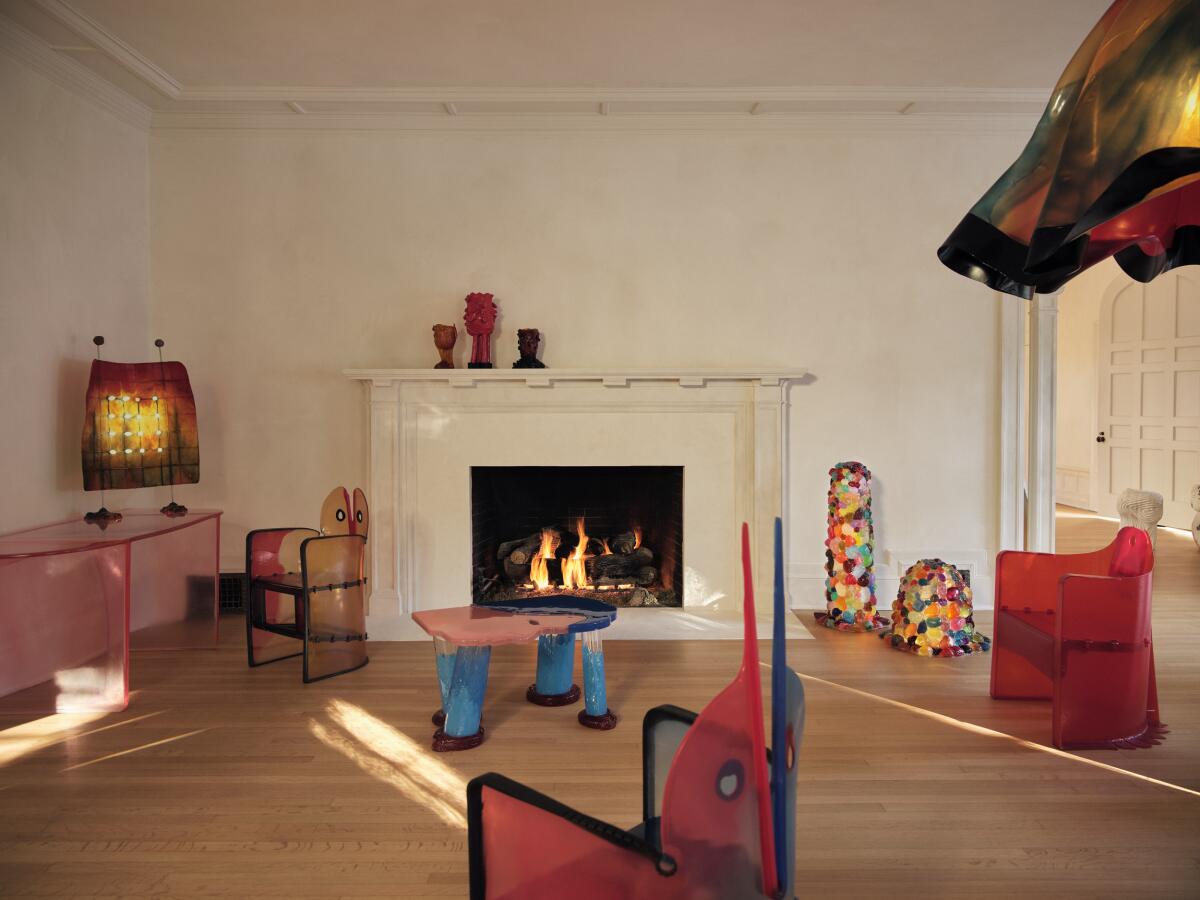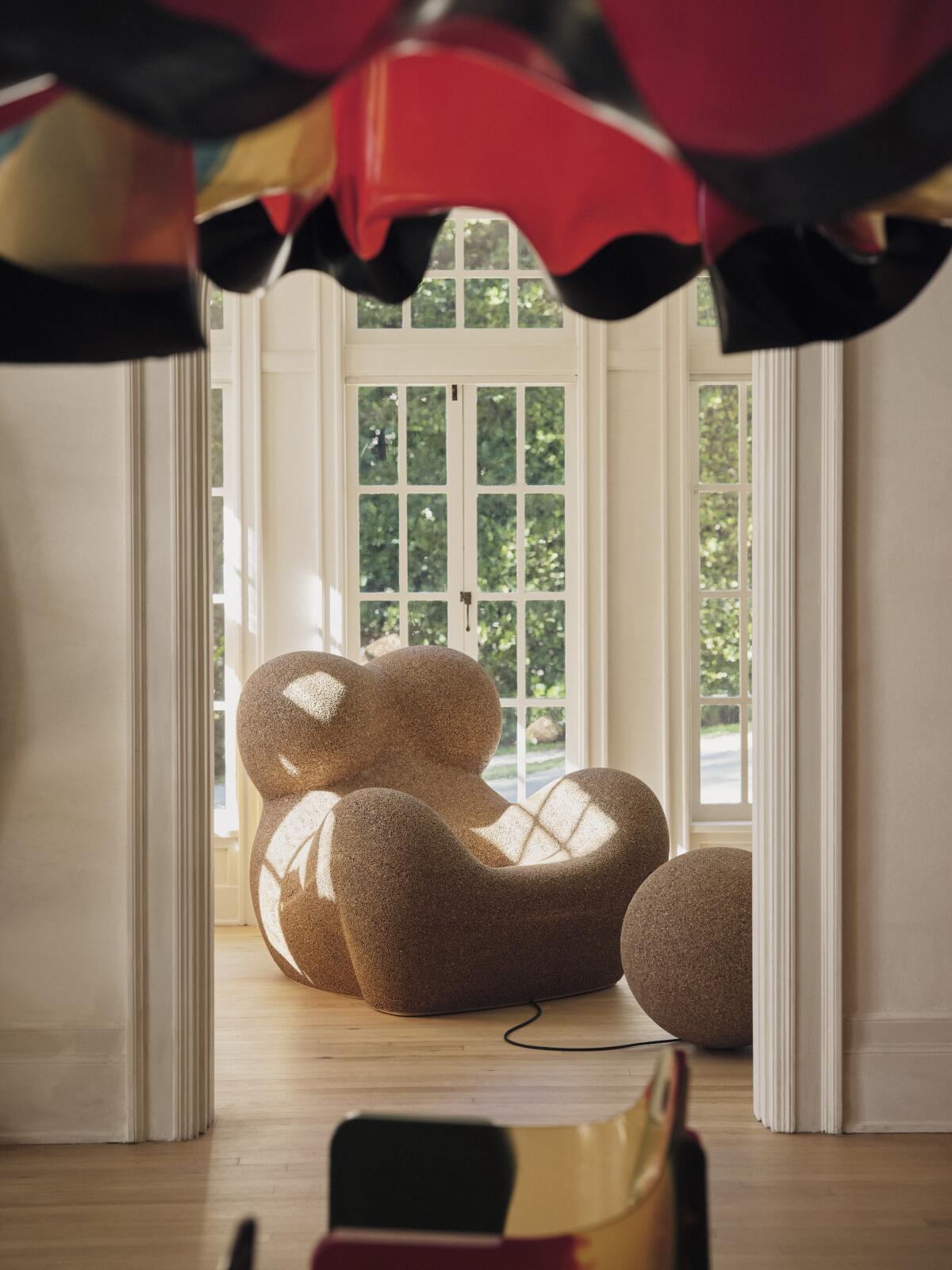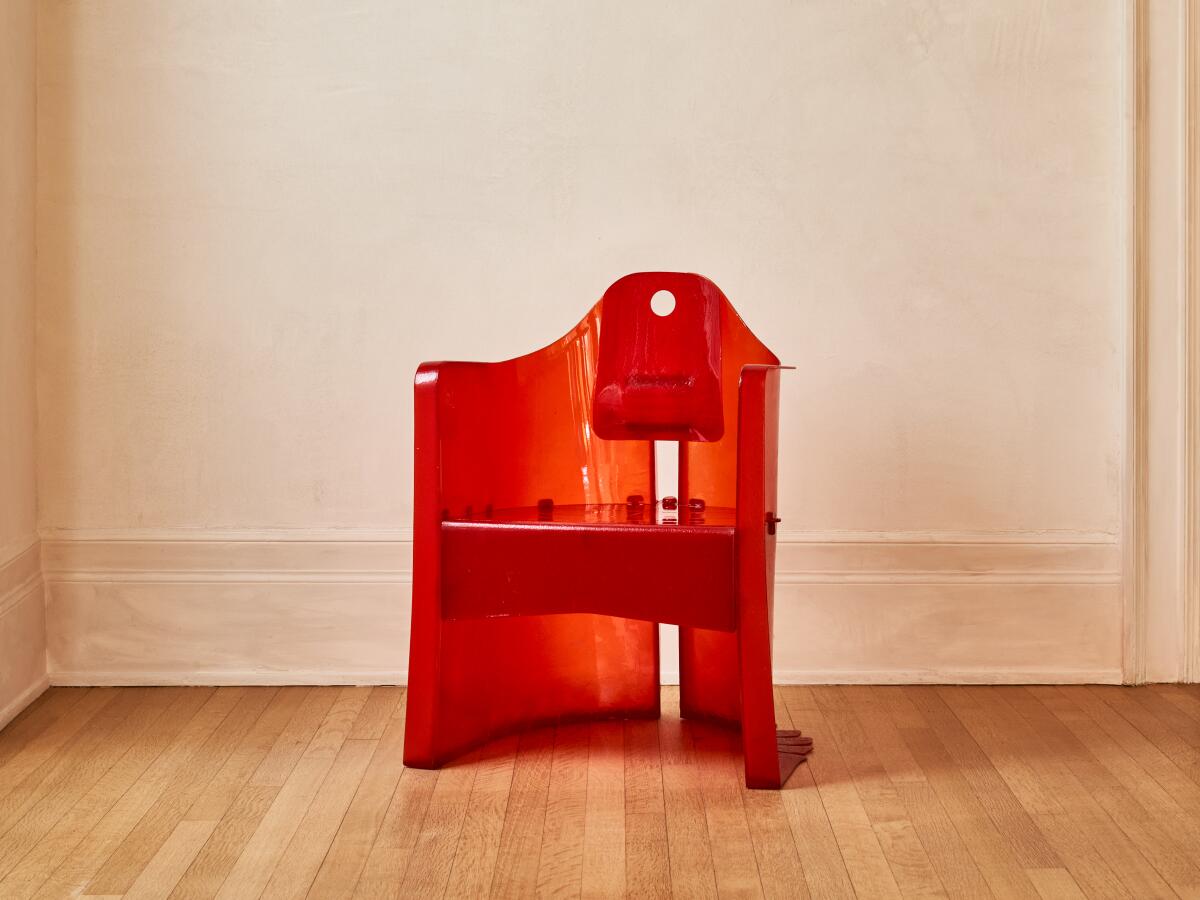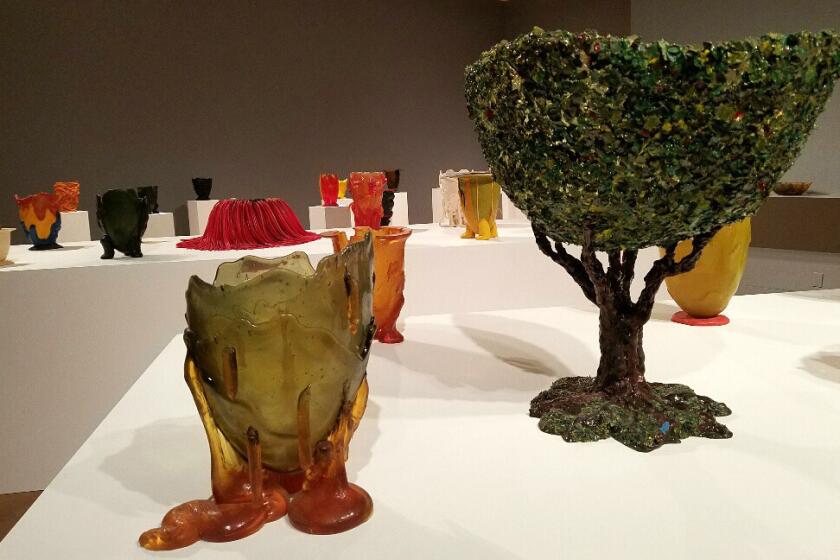Why Hollywood set designers are turning to Gaetano Pesce’s idiosyncratic furniture

Recent whodunit “Glass Onion” centers around tech billionaire Miles Bron (Edward Norton) inviting an array of acquaintances to his private island. In one memorable scene, the group gathers by a resplendent pool. There, a foam lounge chair stands in stark contrast to the monochromatic seating and sculptures it is surrounded by.
It’s a brief moment. But for those familiar with Italian designer Gaetano Pesce, it instantly telegraphs a certain kind of taste but also a privileged, if cloistered, existence. Designed by Pesce, the infamous Up 5, a chair that resembles the lines of a female figure, and its sidekick, a literal ball and chain in the form of an ottoman, has recently been embraced by Hollywood set designers. When Pesce designed it in the 1960s, the work was meant to be an ironic statement about the oppression of women.
Today, Pesce’s chair has become a talisman of sorts for a particular celluloid onscreen character, from the business titan turned villain to a one-percenter whose wealth makes her oblivious to her own foibles. In HBO Max’s recent “Gossip Girl” reboot, the chilly real estate magnate Helena Bergmann has the same Pesce piece in her loft.
According to “Glass Onion” production designer Rick Heinrichs, the Up 5 chair “felt so right for the playground of a billionaire — on top of the world and out of it too.” For Ola Maslik, production designer on “Gossip Girl,” the chair requires the kind of square footage few people own. “It’s so massive and so round,” Maslik says. “You can’t put anything next to it.”
Pesce’s work is undeniably having a moment in pop culture. The Italy-born, New York-based architect, industrial designer and artist is showing his first solo exhibition in Los Angeles at design gallery the Future Perfect, now permanently housed in a neoclassical estate formerly owned by movie producer Samuel Goldwyn at the base of the Hollywood Hills. The Up 5 chair makes a cameo in the exhibition, titled “Dear Future,” through a 2021 edition made of recycled bottle corks.

The show, which opened during Frieze Week, features idiosyncratic furniture, lighting and objects that Pesce has created over more than five decades. According to Future Perfect founder David Alhadeff, Pesce, 83, was one of the first collectible designers working at the intersection of art and design. “There is a radical approach to creating something conceptually driven,” Alhadeff says. “A coffee table that smiles at you when you walk in the door. A chair whose purpose is to evoke love.”
The exhibition presents the range of materials and aesthetics that Pesce works with. The show is peppered with Pesce’s series of vivid resin vases. Some of these pliable pieces appear to be oozing across the table, while others rest on anthropomorphic bases of human legs or tentacles.
His Square Airport Lamp (1986/1994), a lattice of miniature light bulbs studding a flexible rubber membrane, resembles the view of a city at night as a plane descends. Although the lamp is made in a mold, no two lamps are alike. Each one is made from the random pouring of colored urethane, creating an object that sits somewhere between industrial manufacture and handmade fabrication.
According to Heather Flood, dean of the School of Architecture at Woodbury University, Pesce’s work “doesn’t invite imitation, and we live in an imitation culture right now. The singularity of his voice rejects seriality and repetition.”
The exuberant chaos of Pesce’s candy-colored furniture belies his intention to imbue political and cultural ideas into objects. “An object has to be not only practical and functional but has to carry meaning,” says the designer. “I use objects to express my personal view on reality.” That’s why Pesce’s work will never be mistaken for a minimalist midcentury object. “Minimalism has no future,” Pesce says. “An artist has to be witness to the time they are living in,” he says. “This is what I do. Our work is to transform the future.”
“Gaetano is a designer who has been ahead of the curve from the beginning, and as it happens with great talents sometimes, it takes many, many years for their ideas to become pervasive,” Alhadeff says.
Pesce’s work has also been the subject of controversy. A 26-foot version of his Up 5 chair, adorned with arrows and displayed in Milan in 2019 during the city’s design week to mark the chair’s 50th anniversary, was met by protests from feminist activists. In a statement, the group Non Una di Meno wrote that the piece embodies how “a woman is for the umpteenth time represented as an inert body and victim, without ever calling into question the actor of the violence.”

Eagle-eyed viewers can spot Pesce’s work over and over again in film and TV as of late. His furniture has cropped up in recent “Architectural Digest” tours of art world tastemakers Jeffrey Deitch and KAWS. “Selling Sunset’s” glamorous antagonist, Christine Quinn, owns a black Senza Fine chair, an explosion of extruded silicone. Luxury fashion brand Bottega Veneta featured 400 unique, Pesce-designed cotton canvas chairs in its spring 2023 show. Each chair, dipped in resin, lined the runway for audience members to watch the show.
For Quinn, the suggestion that Pesce’s chairs might make the perfect villain’s perch, a la “Glass Onion,” is part of her attraction to his work. “It has to be a statement,” she says, citing the drama of a villain swiveling in his chair to confront James Bond (or Austin Powers). “Sign me up and sit me down because I’m all for it.”
More to Read
The biggest entertainment stories
Get our big stories about Hollywood, film, television, music, arts, culture and more right in your inbox as soon as they publish.
You may occasionally receive promotional content from the Los Angeles Times.











